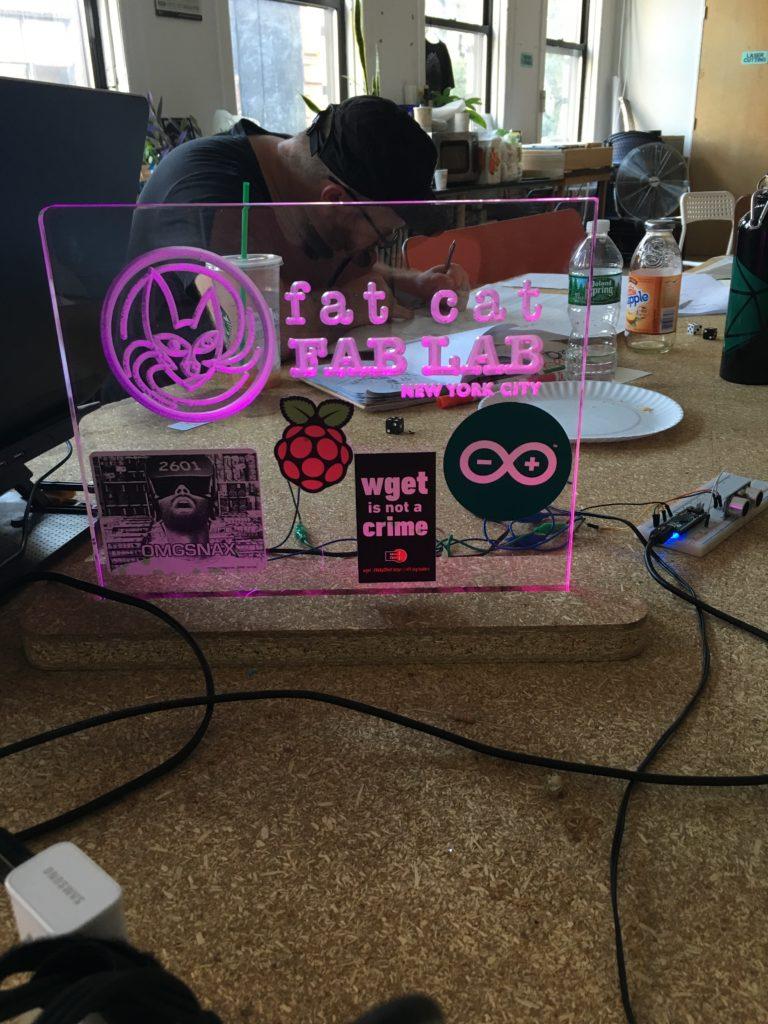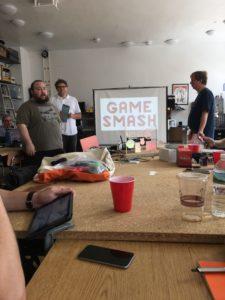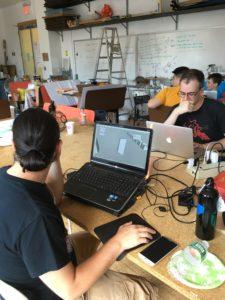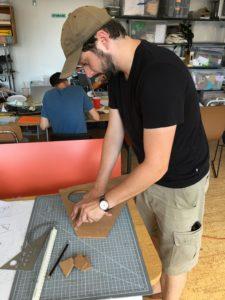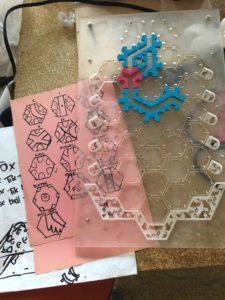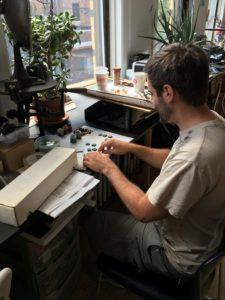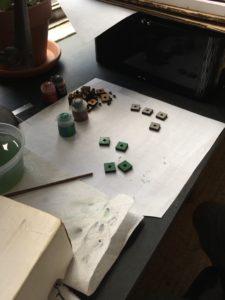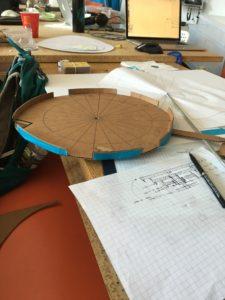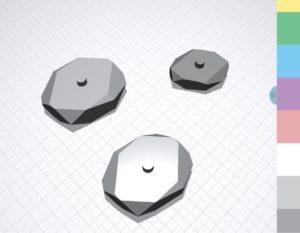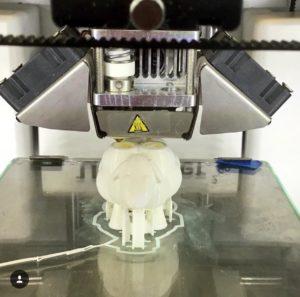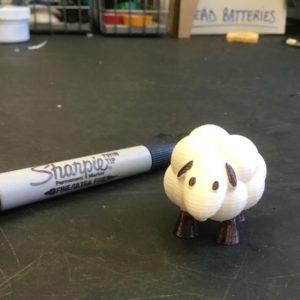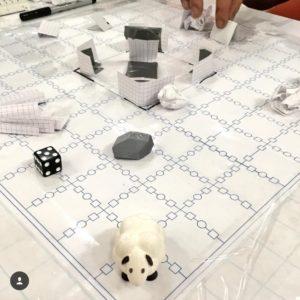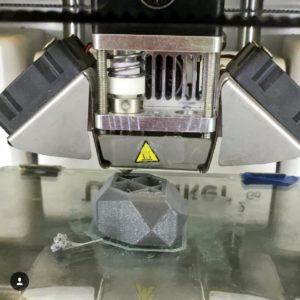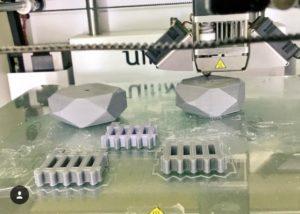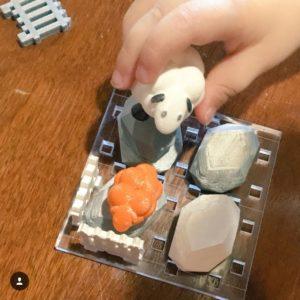Ultimaker, MakerOS and Fat Cat Fab Lab Hit One Out of the Park with GAMESMASH 3D Printed Tabletop Game Challenge
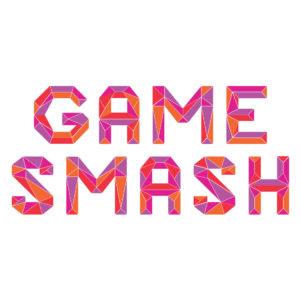 A friend recently asked me why I participate in contests and challenges. Well, for one, it’s a whole lot of fun! It’s also an opportunity to test my skills and to improve them. And challenges in your industry are also a valuable way to meet your peers, make new connections and strengthen existing ones. Last weekend I got to do all that, when I competed at GAMESMASH – The Game Design and Fabrication Challenge. Now I’ve participated in at least a half dozen game jams, including the Global Game Jam, a number of 3D printing challenges and even coached my students at a 3D printed boardgame challenge, but GAMESMASH was the first time I got to work with a team to create a 3D printed tabletop game.
A friend recently asked me why I participate in contests and challenges. Well, for one, it’s a whole lot of fun! It’s also an opportunity to test my skills and to improve them. And challenges in your industry are also a valuable way to meet your peers, make new connections and strengthen existing ones. Last weekend I got to do all that, when I competed at GAMESMASH – The Game Design and Fabrication Challenge. Now I’ve participated in at least a half dozen game jams, including the Global Game Jam, a number of 3D printing challenges and even coached my students at a 3D printed boardgame challenge, but GAMESMASH was the first time I got to work with a team to create a 3D printed tabletop game.
The 1st annual GAMESMASH was, pardon the pun, a smashing success. Sponsored by Ultimaker and MakerOS, the challenge was hosted at Fat Cat Fab Lab, a makerspace in New York’s West Village. Teams consisted of 3 to 6 members and brought together graphic designers, makers, game designers, technology enthusiasts and others interested in using 3D printing, laser cutting and CNC to make their own games. Basically, it was a mini olympics for geeks. Teams were set up before the event and I was paired with two entrants, Nate Brauner and Greg Purnell, that weren’t yet assigned to a team. As far a game jams go, it was a very relaxed and informal setting and we caroused while awaiting the competition rules presentation. Finally, it was time to get the thematic prompt for the challenge… “Bedtime Stories.” Examples given for the prompt were as follows: pirate yarns, children’s garden of verses, children’s books, scary stories to tell in the dark, campfire stories and fairy tales. As with most game jams, the incorporation of this theme into the game could be interpreted very loosely.
- Alex Susse of MakerOS introduces the thematic, mechanic and material prompts
- A pachinko-like game
- Paper prototyping “Bedtime Frenzy!”
- Lasercutting test game board for “Bedtime Frenzy!”
The main mechanic prompt for the games was that they had to designed so they could be played in under 30 minutes, to facilitate judging and make the upcoming play testing night more enjoyable for attendees. This included the explanation of rules, which could be delivered before the game began, during game play or you could even design a game that wouldn’t need any explanation of the rules at all. Lastly, there was the material prompt. There had to be at least one 3D printed part that was crucial to game play. These could be something as simple as spinners and dice, packaging and logos, or they could be things like custom game pieces and game boards. 3D printed parts didn’t have to be used in the final playable games, but used strictly for prototyping, however I think all the teams decided to use quite a bit of 3D printing in their finished games. Ultimaker’s Matt Griffin and MakerOS’ Alex Susse were on hand to assist competitors during the 48-hour challenge. There were a couple Ultimaker 2+s, an Ultimaker 2+ Extended and an Ulitmaker 2 Go for 3D printing, and a laser cutter and a CNC machine available at the site for fabrication. There was also a Silhouette vinyl cutter and 2D printers for creating cards and rule sheets.
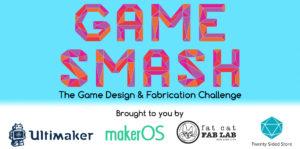 I also saw a few familiar faces at the competition. David Choi, who was my teammate at the MakerBot Makeathon NY, was paired with Sophia Georgiou, CEO of The Inventory Inc. Their team used Georgiou’s Morphi, a 3D design and printing app, to create many of the pieces for their game. Morphi works on the iPad and Mac, and has the ability to capture 2D graphics and easily extrude them into 3D models, which they used on the GAMESMASH logo. All the teams, whether the members knew each other or not before the start of the competition, jelled quickly and were soon creating sketches and paper prototypes of their games. They then moved on to 3D printing their game pieces and many, if not all, of the teams created laser cut game boards. The process is quite involved and I found it fascinating how the different technologies worked together to create some really innovative games. Laser cutting was the perfect tool for larger objects, like the game board, while 3D printing allowed for the creation of more complex, smaller objects.
I also saw a few familiar faces at the competition. David Choi, who was my teammate at the MakerBot Makeathon NY, was paired with Sophia Georgiou, CEO of The Inventory Inc. Their team used Georgiou’s Morphi, a 3D design and printing app, to create many of the pieces for their game. Morphi works on the iPad and Mac, and has the ability to capture 2D graphics and easily extrude them into 3D models, which they used on the GAMESMASH logo. All the teams, whether the members knew each other or not before the start of the competition, jelled quickly and were soon creating sketches and paper prototypes of their games. They then moved on to 3D printing their game pieces and many, if not all, of the teams created laser cut game boards. The process is quite involved and I found it fascinating how the different technologies worked together to create some really innovative games. Laser cutting was the perfect tool for larger objects, like the game board, while 3D printing allowed for the creation of more complex, smaller objects.
While teams try to be somewhat secretive about their games, I saw that Choi and Georgiou were making a game that featured sheep, rocks and fences. Maybe based on Little Bo Peep or counting sheep? I guess I’ll have to wait ’til play testing night like everyone else to find out. There was also a pachinko-like game that used modular interlocking 3D printed parts. Part of that game’s mechanic was that the players have to create the board before every game by placing the individual pieces into little cutouts in the laser cut acrylic base plate, ensuring each game was completely unique. My team, Fractal Attack!, created a game called “Bedtime Frenzy!” that featured a clock-based multilevel board made from laser cut plywood and 3D printed player pieces and tokens. I think it turned out really well, and I’m excited to see how it fares during play testing.
- Sheep designed in Morphi
- After printing this sheep got some color
- Paper prototyping
If you’d like to see and play any of the spectacular games created at GAMESMASH, you can attend the GAMESMASH Playtesting Night this Thursday, August 18th from 7pm – 12pm. Tickets to the event are $10 and can be purchased here. Judging will also take place at the event and there are prizes for Best Design, Best Mechanics and Best in Play categories, with prizes including membership to Fat Cat Fab Lab and an Ultimaker 2+ 3D printer.
Subscribe to Our Email Newsletter
Stay up-to-date on all the latest news from the 3D printing industry and receive information and offers from third party vendors.
Print Services
Upload your 3D Models and get them printed quickly and efficiently.
You May Also Like
Johns Hopkins University Researchers Develop HyFAM Technology
Two scientists from Johns Hopkins University, Nathan C. Brown and Jochen Mueller, have developed a hybrid manufacturing technology they call HyFam, or Hybrid Formative Additive Manufacturing. Their work on this technology...
3D Printing G-Code Gets an Upgrade: T-Code
Good old G-Code still manages many 3D printers, great and small. Just like the STL, it’s a standard that enables collaboration while also holding the additive manufacturing (AM) industry back....
AM Rewind: The Biggest News and Trends of 2024
After a sluggish 2023, driven by persistent inflation and geopolitical tensions, 2024 has seen some recovery. Economic growth climbed from about 2.8 percent in 2023 to a modest 3.2 percent...
Metal Wire 3D Printer OEM ValCUN Announces Plans for 2025 Expansion
ValCUN, a Belgian original equipment manufacturer (OEM) of wire-based metal additive manufacturing (AM) hardware, has announced that the company has entered the next phase of its growth trajectory, making key...


